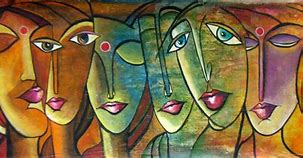
ARTISTIC GENRES. THE CONNECTION BETWEEN ART AND EMOTIONS
Artistic genres encompass a vast array of styles, forms, and expressions that reflect the multifaceted nature of human creativity. From the emotional intensity of Romanticism to the geometric precision of Cubism, each genre serves as a lens through which artists explore and communicate their thoughts, feelings, and experiences. The connection between art and emotions is intrinsic, as artists often draw inspiration from their emotional landscapes to create works that resonate with audiences on a deeply personal level.
One of the most prominent artistic genres, Romanticism, emerged in the late 18th century as a reaction against the rationalism of the Enlightenment era. Romantic artists sought to evoke powerful emotions through their work, often depicting sublime landscapes, turbulent scenes of nature, and intense human experiences. Painters like J.M.W. Turner captured the awe-inspiring power of nature in works such as «The Slave Ship,» where the tumultuous sea becomes a metaphor for the struggle against oppression.
Moving into the 20th century, the emergence of movements like Cubism and Surrealism challenged traditional notions of representation and reality, pushing the boundaries of artistic expression. Cubist painters such as Pablo Picasso and Georges Braque fragmented forms and perspectives, inviting viewers to engage with art in new and unconventional ways.
Surrealist artists, including Salvador Dalí and René Magritte, delved into the realm of the subconscious, exploring dreams, fantasies, and the irrational aspects of the human psyche. Dalí’s melting clocks in «The Persistence of Memory» create a surreal dreamscape where time itself seems to lose its grip, while Magritte’s «The Son of Man» confronts the viewer with the enigmatic presence of a bowler-hatted figure obscuring its own face with an apple, inviting interpretation and introspection.
Artistic genres not only serve as vehicles for individual expression but also as reflections of the cultural, social, and political contexts in which they arise. The Renaissance, for example, witnessed a revival of interest in classical antiquity and a celebration of human potential and achievement. Artists like Leonardo da Vinci and Michelangelo embraced humanism, exploring the beauty and complexity of the human form in their paintings and sculptures.
In contrast, the Baroque period was characterized by grandeur, drama, and emotion, as seen in the works of artists such as Caravaggio and Rembrandt. Caravaggio’s use of chiaroscuro and intense theatricality imbued his paintings with a sense of immediacy and intensity, while Rembrandt’s masterful use of light and shadow captured the psychological depth and complexity of his subjects.
In conclusion, artistic genres encompass a diverse array of styles, forms, and expressions that reflect the rich tapestry of human experience. Whether through painting, music, literature, or performance art, artists throughout history have sought to evoke emotions, provoke thought, and stir the soul of the viewer, listener, or reader. The connection between art and emotions is profound and enduring, serving as a testament to the power of creativity to transcend boundaries and touch the deepest recesses of the human spirit.
Despoina Sali, A4

